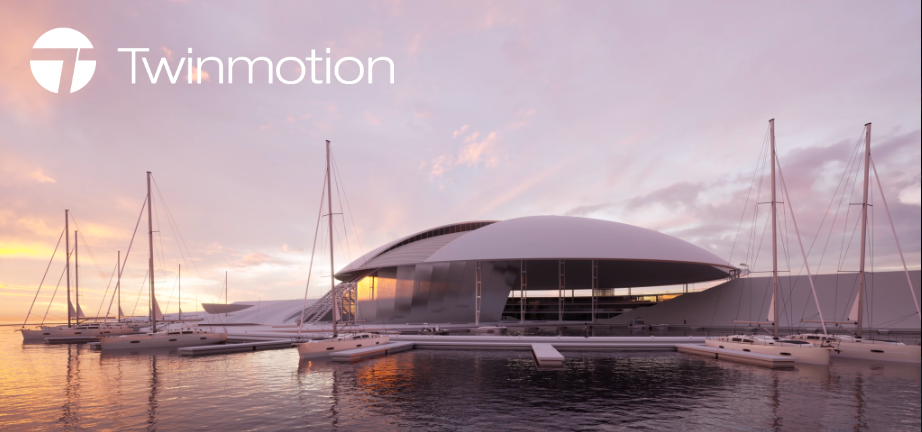Twinmotion 2022.1 offers a host of new features that make it even easier to create
and share stunning visualisations and immersive experiences for architecture,
construction, urban planning, and landscape design. Create high quality images, animations, presentations, and VR walkthroughs.
Twinmotion offers unprecedented real-time quality, an extensive high-quality asset library, easy to learn and use tools, and seamless integration with your data pipeline.
New to Twinmotion 2022
Path Tracer – Create final-pixel imagery comparable to offline renderings, including compromise-free global illumination, physically correct refractions, super-sampled anti-aliasing, and much more, with the new Path Tracer. This DXR-accelerated, physically accurate progressive rendering mode can be easily enabled in the viewport with a single button push, or used to output stunning still images and panoramas, right from Twinmotion, in minutes. It can also be used to render orthographic plan views with shadows. The Path Tracer requires Windows DirectX 12 and a GPU that supports DXR real-time ray tracing.
Twinmotion Cloud Early Access for all – Share your projects with anyone anywhere in the world! With just a computer, tablet, or smartphone and a web browser, users can view and interact with a presentation or panorama running on a high-end GPU in the cloud. With this release, this feature is now available to all users as part of the Early Access program, including educational licensees and trialists. In addition, new Panorama Sets enable you to curate specific points of view for a review, rather than providing a fully navigable scene. It’s also now easier to share links and update presentations.
Thousands of new assets – Two more categories from Quixel Megascans have been added, bringing over 200 new 3D plant species, each with multiple variants, and over 2,000 new decals to Twinmotion. The ability to select which variants from each 3D plant set are used has also been added. In addition, there are nearly 150 new interior and exterior furniture assets. Meanwhile, it’s now possible to use custom Reflectivity, Glow, Bump, and Metalness textures with both standard decals and the new Quixel Decals library.
HDRI Skydome and Skies library – Used in conjunction with the Path Tracer, the new Skydome feature enables you to create more realistic skies and lighting for convincing exterior shots. There’s an extensive library of 285 skies to select from, or you can use your own custom HDRI texture.
Datasmith multi-sync support – Simultaneously sync files from multiple CAD tools into the same Twinmotion scene via Datasmith. For example, you might have a landscape in Rhino and buildings in Revit; now, you can continue to edit each while viewing the combined result in Twinmotion.
LiDAR point cloud import – The ability to load and display laser-scanned data from popular formats, typically acquired in the context of architectural or industrial applications with scanners such as Leica or Trimble has been added. This enables you to view a project in the context of existing landscape and/or structures.
3Dconnexion SpaceMouse support – Support for 3Dconnexion SpaceMouse devices is here, which offer fluid and efficient 3D navigation, easy access to frequently used commands, and seamless switching between different 3D applications.
Full-screen mode editing – It’s now possible to perform various editing actions such as transforming, copying, pasting, and deleting objects while in full-screen mode, enabling you to make changes to a scene while remaining in an immersive environment.
Center pivot & Local axis – The ability to edit pivots of objects and to perform actions in local space has been added, enabling you to more finely control the translation, rotation, and scaling applied to your objects.

